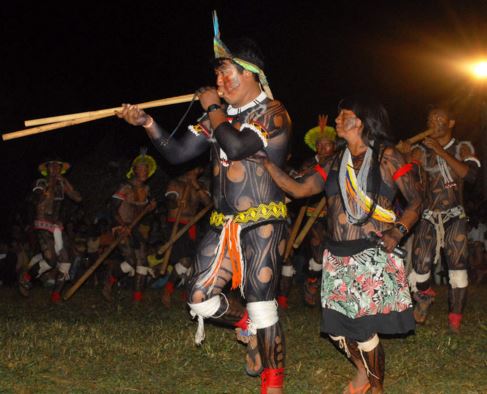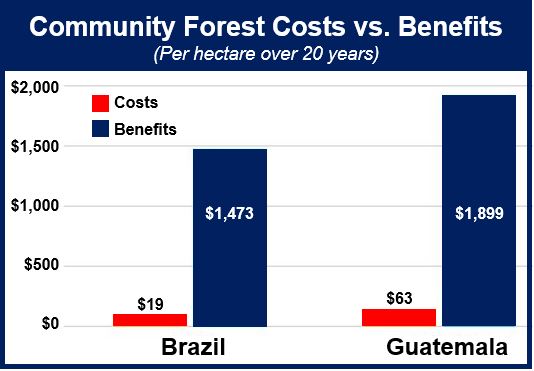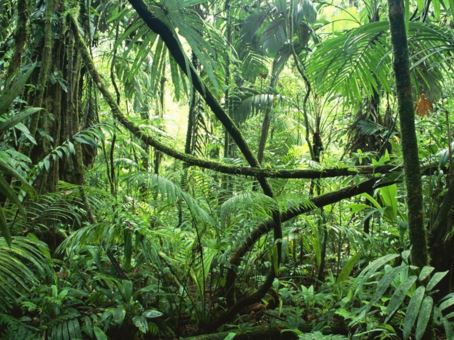Community forest rights can reduce carbon dioxide emissions and protect trees, as well as generating significant returns – environmentally, socially and economically – says a new study published by the World Resources Institute (WRI). Carbon dioxide is a greenhouse gas.
Its working paper – ‘The Economic Costs and Benefits of Securing Community Forest Tenure: Evidence from Brazil and Guatemala’ – found that one of the greatest impacts is in global benefits realized through significantly avoided CO2 emissions from tree felling (deforestation).
Estimates for just two countries
In just the two areas studied – Guatemala and Brazil – secure rights to community forests are forecast to prevent the release of more than 5.4 billion tons of CO2 over two decades. This is equivalent to over one billion cars in one year.
 The Yudja – one of several indigenous groups who call the Brazilian Amazon home.
The Yudja – one of several indigenous groups who call the Brazilian Amazon home.
Lead author, Erin Gray, an economist at WRI, said:
“Secure rights in community forests of Brazil and Guatemala are a positive investment for both countries, which carries important implications for many other countries.”
“Similar investments would provide government officials, climate negotiators and donor agencies the opportunity to pursue a cost-effective and powerful climate change mitigation strategy.”
Community forest rights offer huge economic benefits
The Indigenous Territories in the Brazilian Amazon cover 13% of the country. The authors calculated that the benefits from carbon capture and averted emissions resulting from community forest rights amount to $161.7 billion over twenty years.
The Community Forest Concessions of Guatemala’s Maya Biosphere Reserve, which covers a significantly smaller area, offers benefits totaling $605 million over the same period.
Co-author, Juan-Carlos Altamirano, also an economist at WRI, said:
“The global implications are huge. Indigenous Peoples and communities have some legal rights to about one-eighth of the world’s forests although they actually hold and use much more under customary arrangements.”
“When we invest in strengthening their rights, we now know we are not only doing the right thing, we are also making a smart investment in a more climate-stable world.”
 Community forest benefits are considerably greater than costs.
Community forest benefits are considerably greater than costs.
More carbon capture and healthier forests
According to previous WRI research, community forest rights that are legally protected and recognized by governments frequently translate into healthy forests with high forest carbon storage, and less deforestation.
However, achieving secure rights requires investments to ensure legal protections and their implementation, as well as to improve local people’s capacity to sustainably manage and benefit from forest resources.
In this latest analysis, the researchers calculated that the estimated annual costs per hectare of securing community forest tenure are relatively low, when taking into account the reductions in carbon emissions and avoided deforestation.
In Brazil, for example, investing $19 per hectare today would yield the equivalent of $1,473 in benefits over a period of twenty years. That’s a benefit of $77.5 for every $1 spent.
Over the same period, $63 invested today would yield $1,899 in benefits. The Guatemalan estimate includes the economic benefits to communities through sustainably harvesting and marketing forest products.
Other benefits
Apart from carbon storage, secure community forest rights also produce several other environmental, social and economic benefits, including:
- avoided deforestation,
- improved biodiversity and water regulation,
- increased job creation,
- reduced conflict,
- reduced out-migration, and
- reinvestment in local communities.
The authors believe that the development of such methods will eventually demonstrate even greater net benefits of secure rights to community forests.
Peter Veit, Director, Land and Resource Rights Initiative, WRI, said:
“This paper sheds important new light on the multiple benefits of securing land rights. However, it’s clear that further research is needed to more fully understand the economic benefits. We expect that as we expand our understanding of this issue, decision makers will take more actions to strengthen community land rights.”
Video – What is Climate Change?
Climate change is all about the long-term change in our planet’s average temperature and weather patterns. The term is similar to global warming, but not the same.

